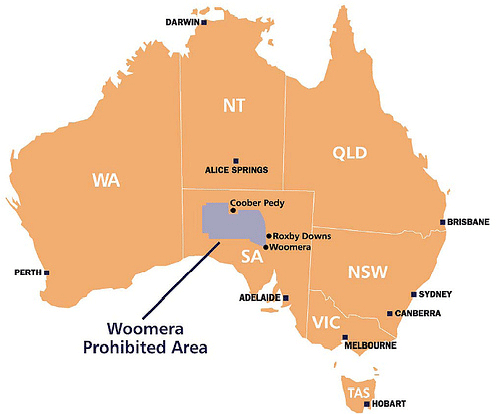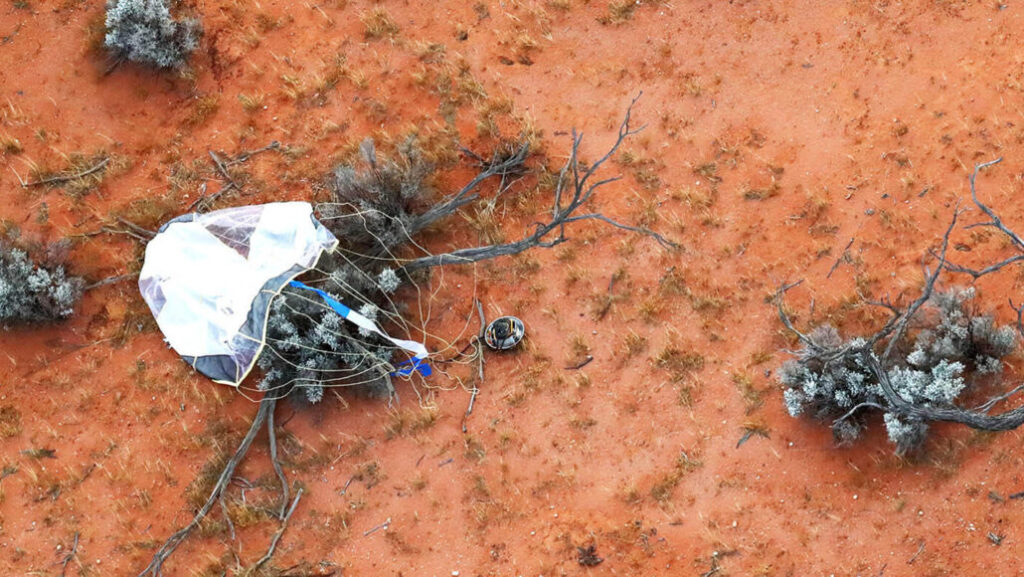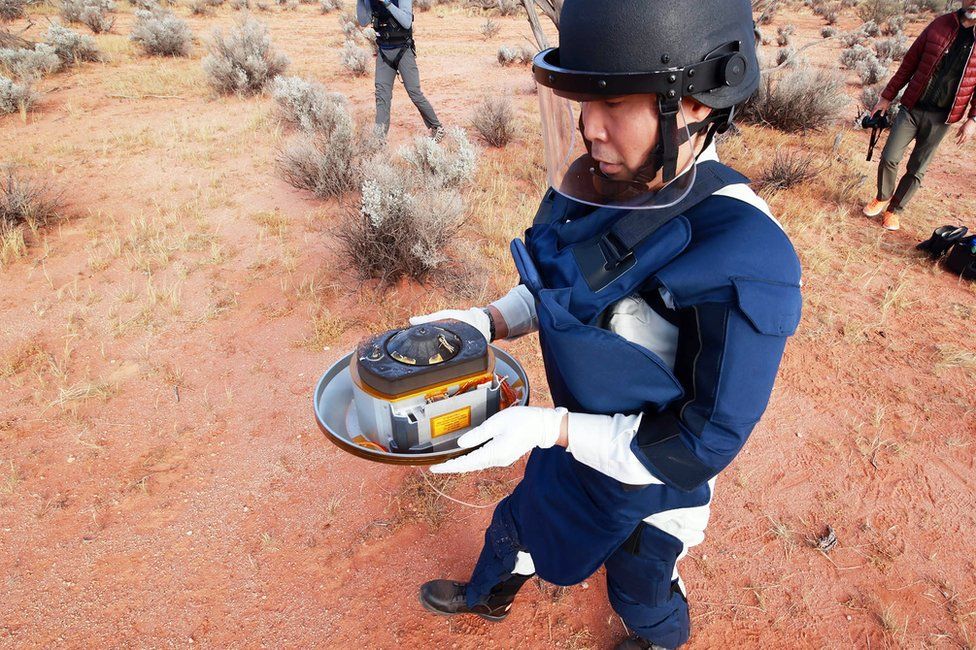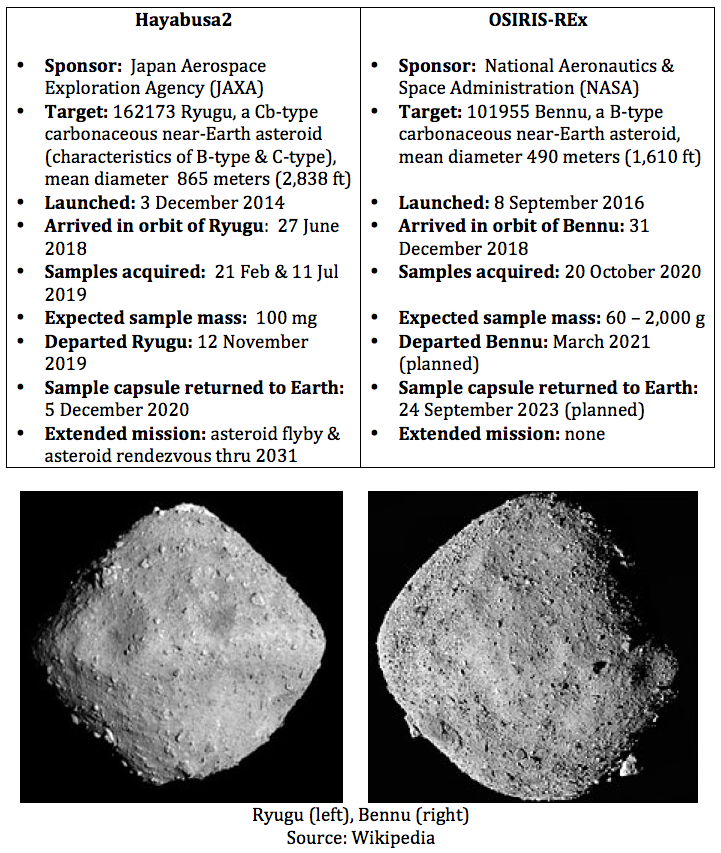Peter Lobner
Japan’s Hayabusa2 (Japanese for Peregrine falcon 2) spacecraft returned from its six-year mission to asteroid 162173 Ryugu for a high-speed fly-by of Earth on 5 December 2020, during which it released a reentry capsule containing the material collected during two separate sampling visits to the asteroid’s surface. The capsule successfully reentered Earth’s atmosphere, landed in the planned target area in Australia’s Woomera Range and was recovered intact. The sample return capsule is known as the “tamatebako” (treasure box).


Source: JAXA

Background
The first asteroid sample return mission was Japan’s Hayabusa1, which was launched on 9 May 2003 and rendezvoused with S-type asteroid 25143 Itokawa in mid-September 2005. A small sample was retrieved from the surface on 25 November 2005. The sample, comprised of tiny grains of asteroidal material, was returned to Earth on 13 June 2010, with a landing in the Woomera Range.
Japan’s Hayabusa2 and the US OSIRIS-Rex asteroid sample return missions overlap, with Hayabusa2 launching about two years earlier and returning its surface samples almost three years earlier. Both spacecraft were orbiting their respective asteroids from 31 December 2018 to 12 November 2019.

You’ll find a great deal of information and current news on the Hayabusa2 and OSIRIS-REx asteroid sample return missions on their respective project website:
- JAXA Hayabusa2: https://www.hayabusa2.jaxa.jp/en/
- NASA OSIRIS/REx: https://www.nasa.gov/osiris-rex
The Hayabusa2 extended mission
An extended mission to explore additional asteroids was made possible by the excellent health of the Hayabusa2 spacecraft and the economic use of fuel during the basic mission. Hayabusa2 still has 30 kg (66 lb) of xenon propellant for its ion engines, about half of its initial load of 66 kg (146 lb).
As of September 2020, JAXA’s plans are is to target the Hayabusa2 spacecraft for the following two asteroid encounters:
- Conduct a high-speed fly-by of L-type asteroid (98943) 2001 CC21 in July 2026. This asteroid has a diameter between 3.47 to 15.52 kilometers (2.2 to 9.6 miles).
- Continue on a rendezvous with asteroid 1998 KY26 in July 2031. This is a 30-meter (98-foot) diameter asteroid, potentially X-type (metallic), and rotating rapidly with a period of only 10.7 minutes.

You’ll find more information on the extended mission on the Hayabusa project website here: https://www.hayabusa2.jaxa.jp/en/galleries/othermovie/pages/ext_mission_en.html
For more information:
- Lisa Grossman, “Hayabusa2’s asteroid dirt may hold clues to the early solar system,” ScienceNews, 7 December 2020: https://www.sciencenews.org/article/japan-hayabusa2-asteroid-dirt-sample-clues-early-solar-system
- Paul Rincon, “Hayabusa-2: Capsule with asteroid samples in ‘perfect’ shape,” BBC News, 6 December 2020: https://www.bbc.com/news/science-environment-55201662